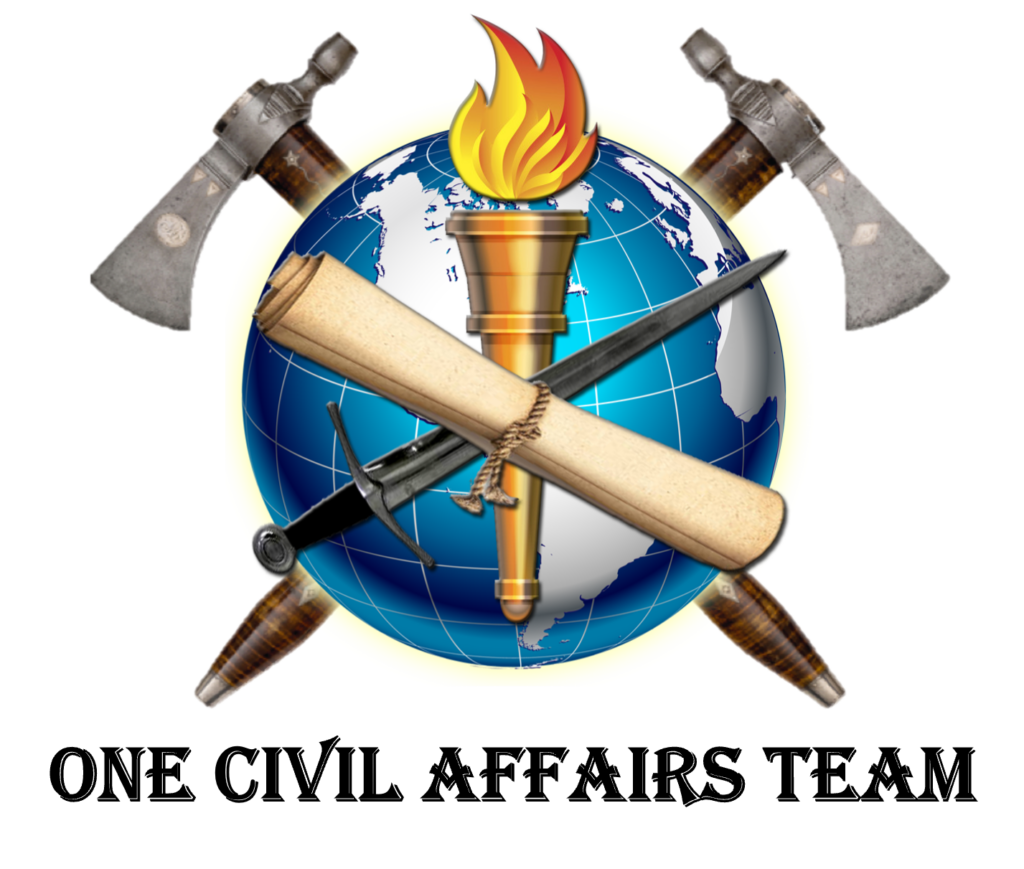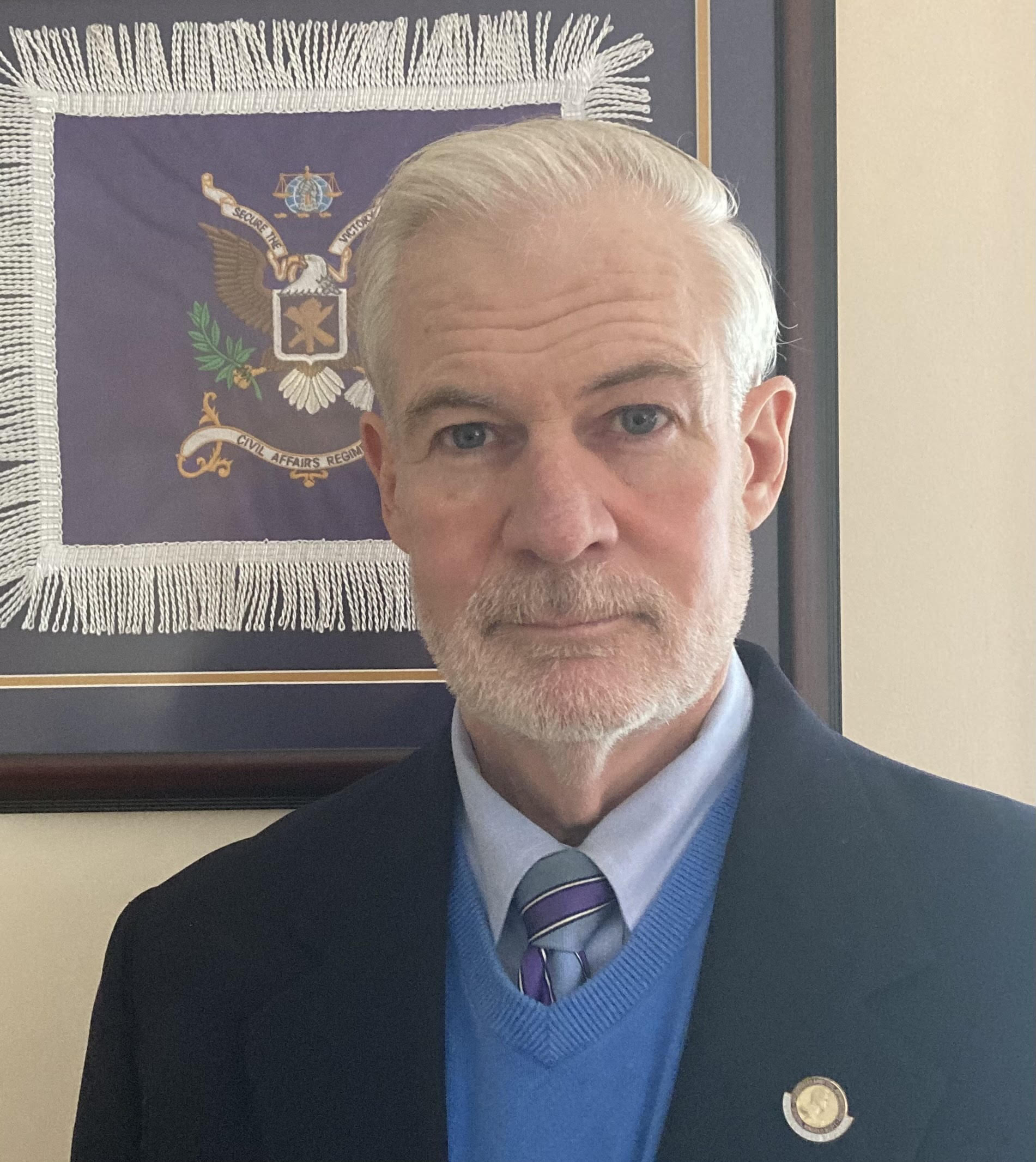7-minute read
Civil affairs in early military training.
When I was a cadet at the United States Military Academy, military history courses focused on encounters between armed adversaries on battlefields across the centuries, while summer training programs emphasized leadership and introduced cadets to the modern Army’s combat, combat support, and combat service support branches, equipment, and units. During my four years at the Academy and a subsequent year of military training at Fort Benning, GA, and Fort Sill, OK, I do not recall hearing or studying about the civil affairs (CA) or military government (MG) units that operated in Germany following WWI, in the European and Pacific Theaters during and long after WWII, or in Korea, Vietnam, the Dominican Republic, Grenada, and at home, as in the 1975 Vietnamese Resettlement and the 1980 Mariel Boatlift.
Looking back, I wonder how much of this was due to the Army of the 1980s retooling for large-scale combat operations under the emerging AirLand Battle doctrine. How much was because of the policy that the U.S. would no longer be involved in nation-building following our withdrawal from Vietnam? How much was because CA was a branch within the U.S. Army Reserve (USAR) and only a functional area for officers in the Regular Army who selected a functional area path around their eighth year of service?
Civil affairs in Korea.
I was first introduced to civil affairs during my initial assignment in the Republic of Korea (ROK), although I was not aware of it at the time. In 1985, I was assigned to a multiple rocket launch system (MLRS) battery stationed in Uijongbu, about 12 miles north of Seoul. At that time, C Battery, 6th Battalion, 37th Field Artillery, was the only MLRS battery on the peninsula. As the ammunition platoon leader, I was responsible for 38 U.S. and Korean Soldiers – the latter as part of the Korean Augmentation to the U.S. Army, or KATUSA, program – and 18 heavy expanded mobile tactical trucks (HEMTTs) used to resupply 9 MLRS launchers that were typically spread across miles of terrain in the 2nd Infantry Division (2ID) area of operations (AO) south of the Imjin River. Among the largest trucks in the Army inventory, these were the first HEMTTs in Korea and were not very maneuverable on some of the dirt roads prevalent in the AO at that time.
Every so often, a HEMTT would collide with another vehicle, damage a fragile shop building on a tight corner, or, as in one memorable case, knock down the cylindrical concrete platform in the center of an intersection used by a ROK soldier or police officer to direct traffic. Of course, we had to report these accidents to the 2ID military police (MPs), but we found out that the MPs would then pass the information on to the Division G-5 Civil Affairs staff officer. The Division G-5 was responsible for handling issues involving U.S. Soldiers or units and South Korean citizens or organizations with the local host nation government. I’d heard that there was at least one person—a South Korean National—hired in a U.S. government service position in the G-5 office specifically for that purpose. I also heard that, during wartime, the G-5 coordinates logistical support from the “A-frame Army”—thousands of Korean Nationals hired to carry supplies such as food, water, ammunition, medicine, and spare parts on A-frame backpacks. This made sense after I read J.R. Fehrenbach’s book, “This Kind of War,” which detailed how UN military convoys were often ambushed in valleys and mountain passes by communist forces, and only man-packed supplies could reach front-line units.
Civil affairs in 1st Ranger Battalion.
My next assignment was as a fire support team (FIST) leader in 1st Battalion, 75th Ranger Regiment in Savannah, GA. On the battalion staff, there was a two-man S-5 section responsible for civil affairs, but no one really understood what that meant for an elite combat infantry unit primarily trained for special operations. The S-5 positions were used as placeholders for a newly promoted Ranger captain awaiting the next advanced course or a seasoned Ranger NCO recovering from an injury. Their main duties in garrison included escorting visiting dignitaries, managing the Ranger Fund, and making Ranger scroll plaques for senior officers and NCOs leaving the unit. The closest example of a CA mission I saw the S-5 captain do was buying fresh vegetables and pita bread for the unit cooks from a market in Amman when the company my FIST supported deployed to Jordan for a month of desert training. Similarly, the RS-5 at 75th Ranger Regiment headquarters was typically an infantry major with no CA training serving as a special projects officer while waiting to take a branch-qualifying position as a Ranger battalion S-3 or executive officer.
Civil affairs in West Germany.
In 1989, after completing the Field Artillery Officer Advanced Course, I was assigned to the 5th Battalion, 41st Field Artillery Regiment of the 3rd Infantry Division (3ID), stationed in Schweinfurt, West Germany, in support of 1st Brigade, 3ID. During force-on-force exercises at the Hohenfels Training Area (HTA), I observed that the ruins of towns and individual buildings were scattered across the landscape where we conducted combat exercises. I wondered what it would be like to fight through populated areas, as depicted in WWII movies like The Longest Day and A Bridge Too Far. At that time, HTA did not have civilians on the battlefield, so there was no need to include civil considerations in planning and executing operations before, during, or after combat. Like Korea, there was a G-5 staff section at 3ID headquarters, but there was also a German civilian employee at 1st Brigade headquarters who handled liaison duties with the host nation government during peacetime. I only learned years later that infantry brigade tables of organization and equipment included S-5 sections, but they were considered “required but not authorized” until wartime.
I recall hearing about CA only twice while I was there from 1989 to 1992—once directly and once indirectly. The first time was during REFORGER 90, the annual “Return of Forces to Germany” exercise, which rehearsed the deployment and maneuvering of hundreds of military units across the German countryside. Units that caused damage to roads, buildings, crops, livestock, etc., were instructed to report the damage to their chains of command. Army CA units from the states then engaged German farmers and other civilians who experienced property damage to process or settle claims against the U.S. government.
The second event happened in April 1991, shortly after the Gulf War ended. Since 1st Brigade, 3ID, and its brigade combat team enablers did not deploy to Saudi Arabia for Desert Shield/Desert Storm, we trained at HTA for nearly two months in preparation for a possible deployment as replacement units. When the war ended quickly and the combat troops returned to Germany, the 3ID commander gave everyone in the division a free five-day pass. I looked for a place to go scuba diving and found that the Armed Forces Recreation Center at Chiemsee was still closed for winter. Then I drove to Bad Tölz, home of 1st Battalion, 10th Special Forces Group (Airborne), to see if I could get better information. However, when I arrived at Flint Kaserne, it was almost empty. After asking around, I was told the battalion was on a humanitarian assistance mission called Operation Provide Comfort in northern Iraq. I later learned that Soldiers of the 353rd CA Command, stationed in The Bronx, NY, other USAR CA units, and the 96th CA Bn from Fort Bragg, NC, were diverted from their redeployment home from Desert Storm to participate in this mission. Luckily, my trip to Bad Tölz was not fruitless. I found a flyer on a billboard at the Post Exchange advertising the Mantas American Scuba Club, so I spent the next few days at a lake in Linkenheim-Hochstetten, not far from Heidelberg.
Question for our teammates: In what year, in what context, and at what point in your career did you first hear about civil affairs, and what were your impressions?
Responses from Teammates:
2 Oct 2025, BG(R) Ferd Irizarry: I knew nothing about CA before putting in my paperwork. Or nearly nothing. I was a senior Infantry CPT at the National Training Center and missed the big dance in CENTCOM (Desert Storm) training the famous 48th BDE, GAANG. I spoke to a senior OC and recommended CA. I had my masters in Public Administration (to keep from getting RIF’d). In 1992/1993 it was a FA [functional area] and they needed folks. I was hoping I’d stand a better chance of getting promoted and making it to 20 in CA. That was the beginning of 22 years in AC CA.
4 Oct 2025, COL(R) Lars Skinner: When I went through the 38A OAC (2002), it was back when you still got a ‘box of books’ in the mail(!) and had to write an area study of “Pineland.” Nowhere near as good of a course as it sounds like it is now, with a sort of SFAS / Robin Sage experience. But I do remember one book on the history of CA that was pretty interesting. I keep thinking that someone could use that as a starting point to write a really interesting history of CA. Maybe that will be my first project when I retire next year..?
9 Oct 2025, LTC(R) Roy Perkins: My Civil Affairs story was when I was assigned as the SHAPE/USAREUR’s CA/PSYOPS in theater staff writer to capture lessons learned in Bosnia (1996). Prior training = nada. Only qualification I had was a TS clearance. During the deployment, I learned a lifetime of lessons from the USAR reservists actually doing the hard work.
Send a note to the Civil Affairs Team Room.
Subscribe for updates to the Civil Affairs Team Room Blog
Don’t forget to check out our affiliated sites
LC38 Brand
Aerial Resupply Coffee

